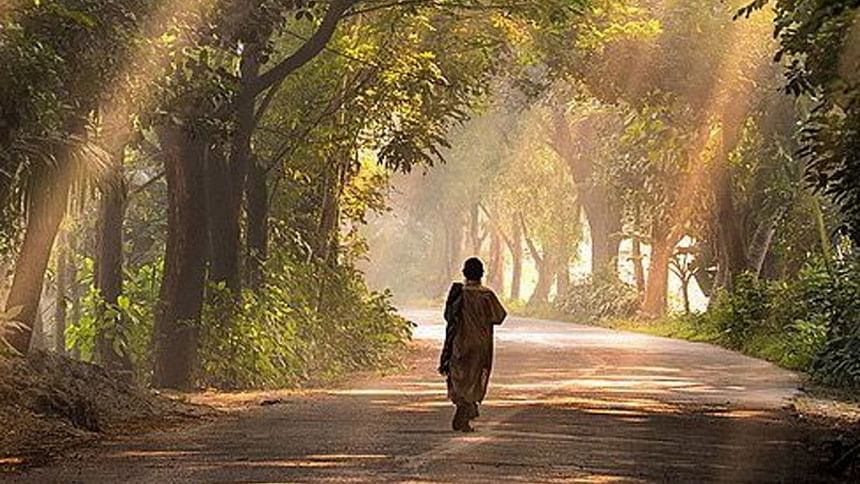Walking is not pedestrian

Life has changed in so many ways due to Covid-19, this one change may not even have registered for you. But with restrictions on motorised transport, people are walking more than ever. Much of it is by necessity, but sometimes the necessary can also reveal hidden pleasures.
The Merriam-Webster dictionary defines pedestrian as "commonplace, unimaginative." The fact that the same word is also used to denote people travelling on foot does not help our status. And yet I would argue that walking is anything but commonplace and unimaginative.
If you truly wish to explore your city, to get to know its nooks and crannies, it's best to do so on foot. If you wish to have friendly interactions with other urban residents, it's best to do so on foot. Cycling is a great way to travel farther, but walking is ideal for in-depth, close-up exploration.
Walking of course has many other benefits both to the person doing it and to others in the city. Walking is a great form of exercise and is easier on the joints than running. By walking to our destinations, we can combine exercise, travel and recreation. Since walking requires no terminal capacity (that is, parking), it is vastly more space-efficient than travel by car. Pedestrians do not emit toxic fumes, nor do we require vast resources for our construction and disposal. Pedestrians do require fuel, but since people have to eat anyway, and since we require vastly less fuel to grow our food than a car does to travel, we are environmentally-friendly and good for the climate. And of course it's impossible to seriously harm anyone in a purely pedestrian collision.
With all the benefits of walking both to those on foot and to greater society, why do pedestrians get such short shrift both in transport planning and in our common vocabulary? Unfortunately there is little money to be made off of having more people walking. The three-headed monster—cars, fuel, and road-building corporations—profit when travel is considered to mean motorised vehicles and particularly the automobile. The three-headed monster heavily lobbies governments for greater investments in road-based infrastructure, despite all the costs in terms of lost lives (road crashes), congestion, air pollution, and the climate crisis, to name just a few. And of course there is the perception that only the poor walk (or ride bicycles). Who will lobby on behalf of poor pedestrians? Who can get excited about the commonplace and unimaginative?
But perhaps those who are walking more now during the shutdown are noticing how incredibly enjoyable a trip on foot can be, when not dealing with the danger and fumes of motorised traffic. The opportunities for exercise, socialising, and an opportunity to get to know your city better may help raise the profile of the pedestrian.
It helps to remember that people have always walked a lot. Walking is the main source of transport even in Dhaka, whereas cars account for less than 10 percent of trips.
And yet it seems all too easy to forget about pedestrians. Governments tend to regard only trips by motorised travel as worth planning for. Trips by foot, bicycle, and rickshaw are largely ignored or only seen as obstacles for those moving by car. Thus we hear about the "disorderly movement of pedestrians" or their tendency to "throw themselves in front of cars". When we exchange our windshield perspective for a trip on foot, it is no longer the pedestrians who appear to be the problem; then we see all too well the aggression of many drivers and the lack of decent infrastructure or provisions for walking.
It helps to notice that around the world, it is often the wealthiest countries that offer the best environment for walking. Rather than punish those on foot, cities in Eastern and Western Europe as well as Scandinavia—some of the wealthiest cities in the world—reward those on foot. Drivers stop and wait patiently for those on foot to cross the street, without the need for pedestrians to push a button or climb two flights of stairs. Footpaths are wide, and entire streets ban cars, giving people on foot plenty of space to walk, chat, and even play. Walking is celebrated as an important part of a liveable city rather than treated as a desperate mode of travel for those without other options.
While we're all impatient to return to a more "normal" situation post-Covid lockdowns, I do hope that we can remember the joy of walking. I also hope that we can work to improve the walking environment so that commuting by foot becomes something to celebrate rather than dread.
Debra Efroymson is Executive Director of the Institute of Wellbeing in Dhaka, Bangladesh and author of Beyond Apologies, Defining and Achieving an Economics of Wellbeing.

 For all latest news, follow The Daily Star's Google News channel.
For all latest news, follow The Daily Star's Google News channel. 



Comments